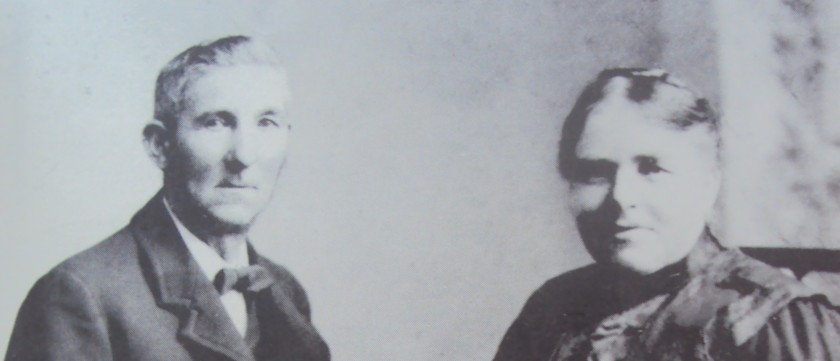James Stevens was born on 1st August 1847 at Jawnes (or Jownes), a smallholding halfway between Zennor Churchtown and the sea. He was the youngest of seven children of William Thomas Stevens (a mine engine-driver) and Catherine Perry. James’s older siblings were William, Elisabeth, Kitty, Abraham, Ann and Mary Jane. Three of them emigrated, Abraham and William to America in the mid-1860s and Mary Jane to Napier, New Zealand in 1890 and, although James corresponded with them regularly, he never saw them again.
On 19th April 1874 James married Honor Edwards Stevens of Foage, Zennor, the daughter of John Stevens (a tin miner) and Honor Edwards. James’s wife also had siblings who emigrated, her brothers John and Francis (Frank) living out their lives in Nevada City, California. Although James and Honor shared the same surname no family connection has been found between them but, like many families in West Penwith at the time, they could have been distantly related. Over the next 17 years they had eight children; Ann (Annie), James, Honor (Maid Honor), Catherine (Kate/Katie), Elizabeth (Bessie), Dorcas Rowe, Eliza (Lillie), and Mabel Jane.
Their first home was with James’s parents at Eglosmeor Mill (which stood on the cliff to the West of Zennor Head), where William and Catherine Stevens had moved in about 1853. In 1877 James kept a Diary for one year, and his entries show that he spent much of his time “milling”. When he had left school in 1863, as well as helping his father at the mill, he had at times worked at Wheal Grylls mine nearby.
In 1884 James, Honor and their children moved to Foage, a mile inland from Zennor Churchtown, where Honor had lived before their marriage (today their house is a National Trust holiday cottage, called ‘Honor’s House’). Adjacent to them was the home of Honor’s cousin, Francis Edwards, and his family. In 1892, during his time at Foage Farm, James began the Diary which was to become an almost daily record of his life for the next 21 years. Their final move, in 1897, was to Glebe Farm in Sancreed, where James continued to keep his Diary until the end of 1912.
Among Diary entries concerning daily farming and family life, James also recorded local and national events such as wrecks (including the Titanic), workers strikes, extreme weather, riots, Royal deaths and coronations, political changes and overseas wars. It seems that he never travelled outside of Cornwall and, according to his Diary, the furthest he ever went was Bodmin. As James told the writer J. Harris Stone, “London is not in my district”.
James had been raised a Methodist but later became an Anglican, and noted his regular attendances at chapel or church, as well as his reading of the “Bible” or “Testament” in the evenings. On 21st March 1893, at the age of 45, he was confirmed at Gulval Church, along with James, Annie, Maid Honor and Katie. For many years James served as Churchwarden both at Zennor and Sancreed.
James’s last diary entry was on 31st December 1912, when he says he has been given a new book to write the next year’s diary in, but it seems he did not continue it. On his 65th birthday that year he had written “I believe I have failed in strength more this last year than I did in all my lifetime before…”. In 1914 he retired from farming and moved with Honor into Little Grumbla, Sancreed (previously farmed by their son James), and the younger James took over Glebe Farm.
James Stevens died at Little Grumbla on 21st April 1918 and was buried in Sancreed Churchyard, where he was joined four years later by his wife, Honor. Around them are buried six of their children (James, Honor, Katie, Bessie, Lillie and Mabel) and three of their grandchildren.

James and Honor Stevens
Eglosmeor Mill and Foage Farm
Glebe Farm and Little Grumbla




